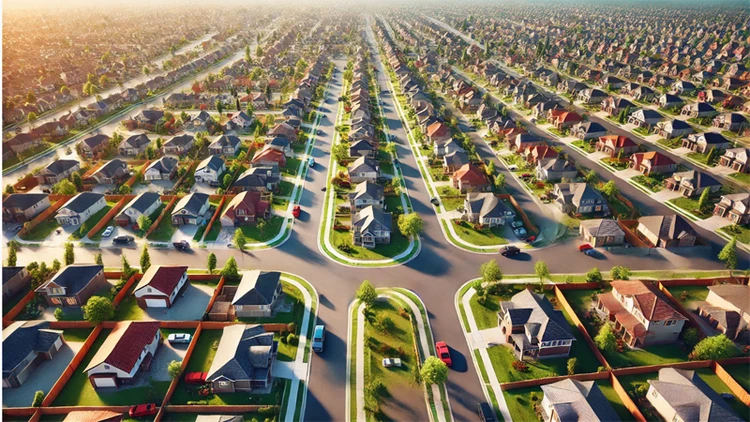Falling sales volume did little to drag down prices

It hasnt been a good year for the real estate industry as home sales have declined nearly every month. But people who want to buy a home have not seen prices go down as you might expect.
A new report from the National Association of Realtors (NAR) shows that in nearly 90% of metros, home prices increased in the third quarter of 2024. Seven percent of the 226 tracked metro areas recorded double-digit price gains over the same period, down from 13% in the second quarter.
Home prices remain on solid ground as reflected by the vast number of markets experiencing gains, said NAR Chief Economist Lawrence Yun. A typical homeowner accumulated $147,000 in housing wealth in the last five years.
Little chance of a market crash
Yun says that even with the rapid price appreciation over the last few years, the chance of a market crash is minimal. Distressed property sales and the number of people defaulting on mortgage payments, he says, are both at historic lows.
Two decades ago, a 7% mortgage rate was not especially burdensome. Thats because the median home price in 2004 was just $195,000, according to Statista.
Compared to one year ago, the national median single-family existing-home price rose 3.1% to $418,700. In the second quarter, the year-over-year national median price increased 4.9%.
The Northeast led the nation in rising home values with an average increase of 7.8%. Other areas of the country saw more modest increases but increases nonetheless. The Midwest, home to some of the most affordable housing markets, saw prices rise by 4.3%. Home prices increased by 1.8% in Western metros and by 0.8% in the South.
The top 10 metro areas with the largest year-over-year median price increases, which can be influenced by the types of homes sold during the quarter, all experienced gains of at least 10.6%. Four of the markets were in Illinois.
Where prices rose the most
Overall, markets where home prices rose most were Racine, Wis. (13.7%); Youngstown-Warren-Boardman, Ohio-Pa. (13.1%); Syracuse, N.Y. (13.0%); Peoria, Ill. (12.4%); Springfield, Ill. (12.3%); Burlington-South Burlington, Vt. (11.7%); Shreveport-Bossier City, La. (11.5%); Rockford, Ill. (11.1%); Decatur, Ill. (10.9%); and Norwich-New London, Conn. (10.6%).
Despite rising prices, housing affordability slightly improved in the third quarter, but only because mortgage rates trended lower. Mortgage rates, however, have trended higher over the last six weeks.
NAR data show the monthly mortgage payment on a typical existing single-family home with a 20% down payment was $2,137 in the third quarter, down 5.5% from the second quarter ($2,262) and 2.4% or $52 from one year ago.
Families typically spent 25.2% of their income on mortgage payments, down from 26.9% in the prior quarter and 27.1% one year ago.
In spite of this, Yun believes the worst of the housing affordability crisis is over. Housing affordability has been a challenge, but the worst appears to be over.
Rising wages are outpacing home price increases, Yun said. Despite some short-term swings, mortgage rates are set to stabilize below last years levels. More inventory is reaching the market and providing additional options for consumers.
Photo Credit: Consumer Affairs News Department Images
Posted: 2024-11-12 00:53:15


















